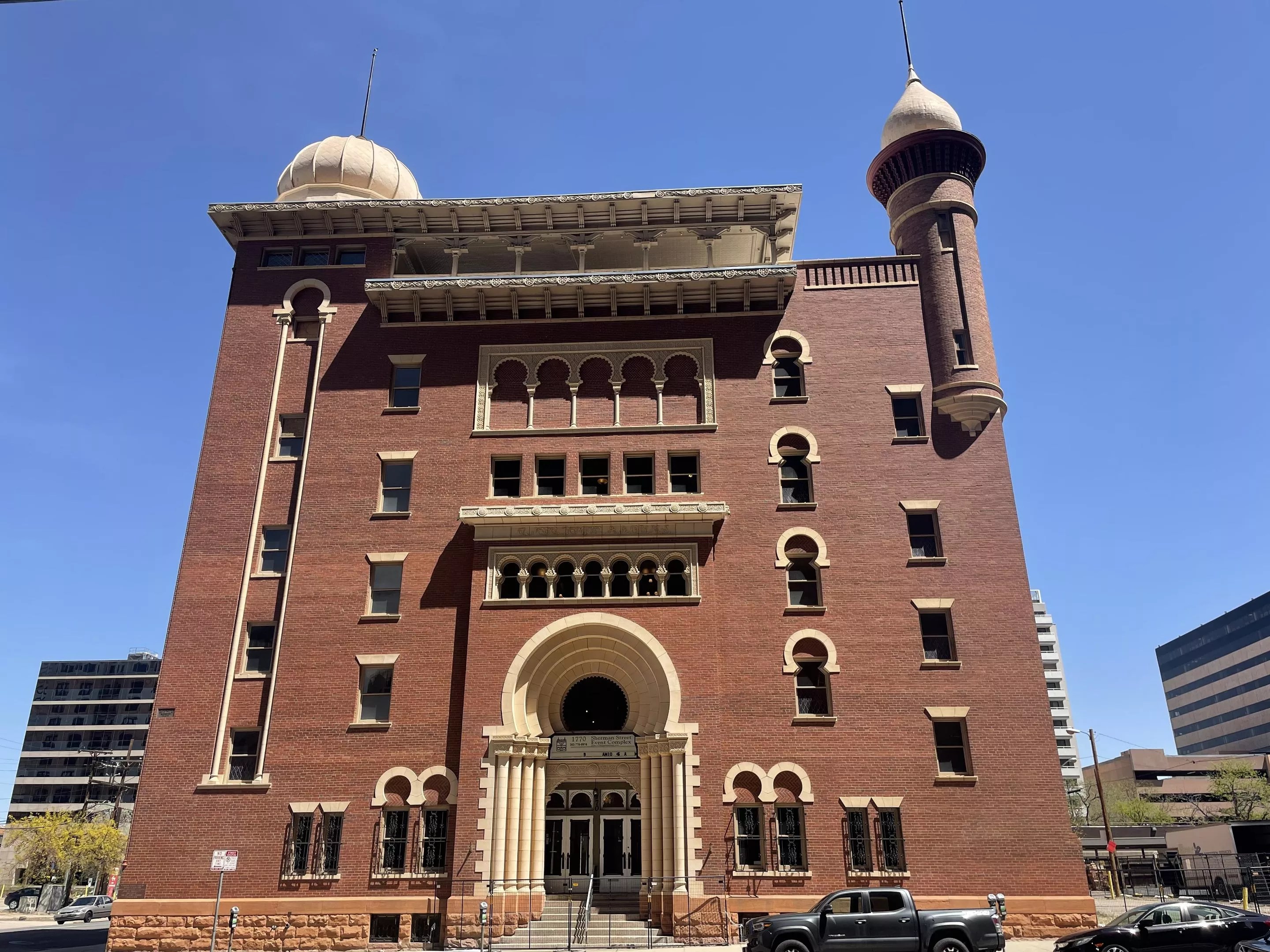
Catie Cheshire

Audio By Carbonatix
Depending on your age and media preferences, rooms inside the El Jebel building, the onion-turreted five-story building in Denver’s Uptown neighborhood, might remind you of Bridgerton or Harry Potter or The Princess Bride.
The building at 1770 Sherman Street has been identified as one of the most architecturally significant buildings in the city. Now it’s beginning a new journey as an events venue.
El Jebel has been on the National Register of Historic Places since 1997, so it can’t be destroyed. But the building’s lot also has a parking area that developers – including former president Donald Trump – have examined as a potential site for a skyscraper over the years.
In 2003, nonprofit Historic Denver secured a conservation easement on the property that allows development on the parking lot while requiring any owner to maintain the historic El Jebel building. No one has made use of the building since 2012, when the Sherman Events Center stopped occupying the space.
But El Jebel will soon have a new tenant: Non Plus Ultra (NPU), a company that makes use of notable buildings caught in limbo, such as the Sports Castle at Tenth Avenue and Broadway. As developers decide what to do with such buildings or the lots they sit on, NPU rents and activates the sites for events while their fates are being decided.
“Part of the fun of all of this is that we’re able to bring these sorts of buildings back to life, to bring people back inside of them,” explains NPU CEO Jordan Langer. “At one point, [El Jebel] was a very active social hall, and then it just kind of sat empty for quite some time, and we’re very fortunate to be some of the folks to bring it back to life and start doing some more fun stuff there.”
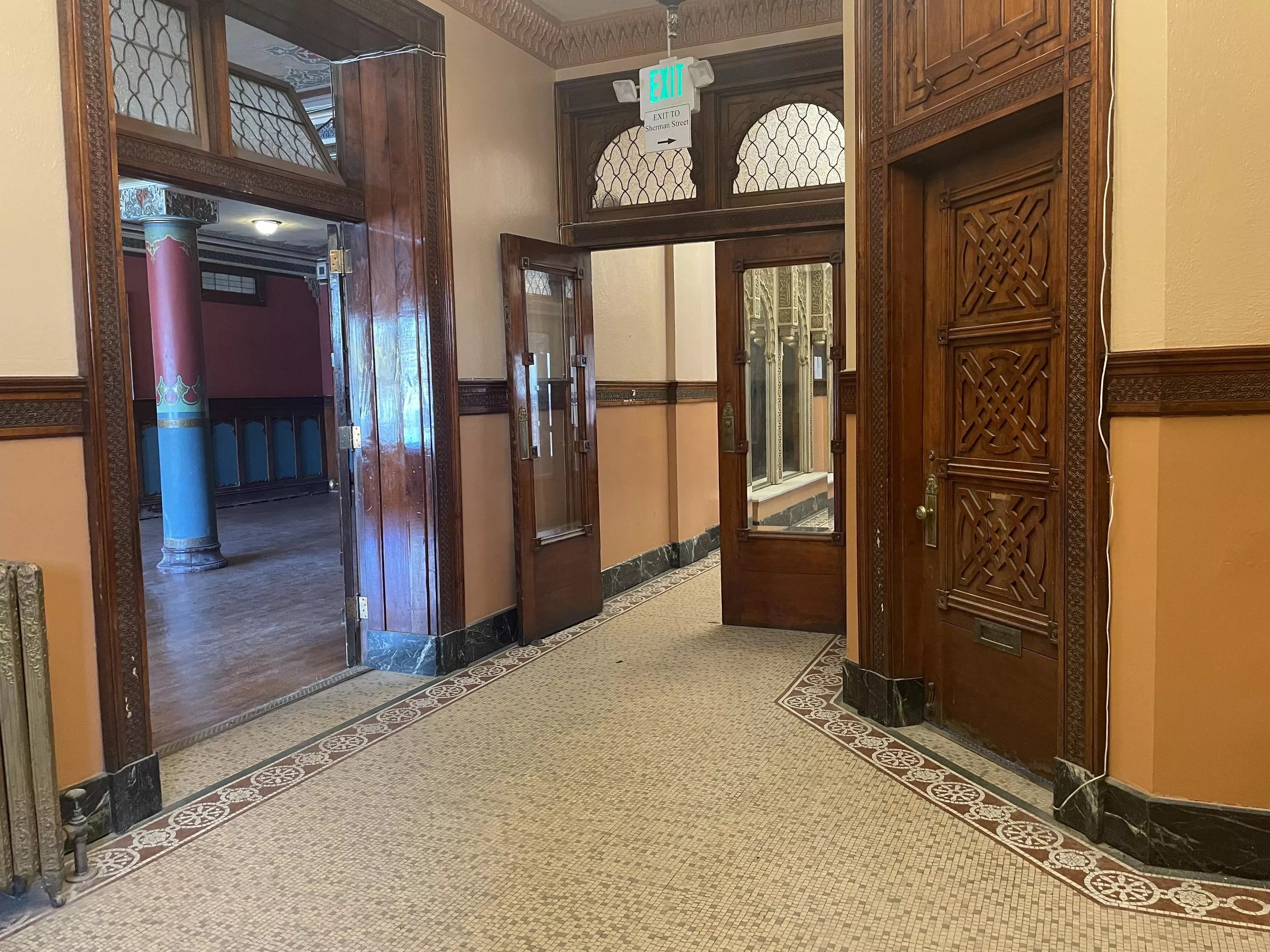
Even the hallways at El Jebel have remarkable details.
Catie Cheshire
NPU pays a portion of event revenue to whomever owns the venue or land. For El Jebel, that’s Robin Lubin, an attorney who owns a limited liability company in Virginia that bought the property in 2016 for $12.37 million.
Lubin’s company has submitted various plans to the city over the years for the property, including proposals for a 61-story apartment-hotel hybrid in 2016 and 2018 and another for condos in 2021. None of them panned out, however, and now the company is close to defaulting on a $9.1 million loan it took out for the space in 2023 from Fairbridge Strategic Capital, according to BusinessDen, which reported on April 29 that the building is in foreclosure.
Lubin told BusinessDen that he expects to pay off the loan, avoiding foreclosure, and propose a new project of around thirty stories for the parking lot. In the meantime, NPU wants to welcome people into the building, which has architectural details unlike any modern creation.
Preserving the History of the El Jebel
The building was constructed in 1906 by the Shriners and opened in 1907 as the Mosque of the El Jebel Shrine of the Mystic Order.
“No other interior space in the state surpasses the mosque for its high level of artistic detail and craftsmanship,” according to History Colorado.
The Shriners sold it in 1924 to the Scottish Rite Masons, who used it until 1995. After that, it was owned by Eulipions, a nonprofit arts organization that ran the Sherman Events Center.
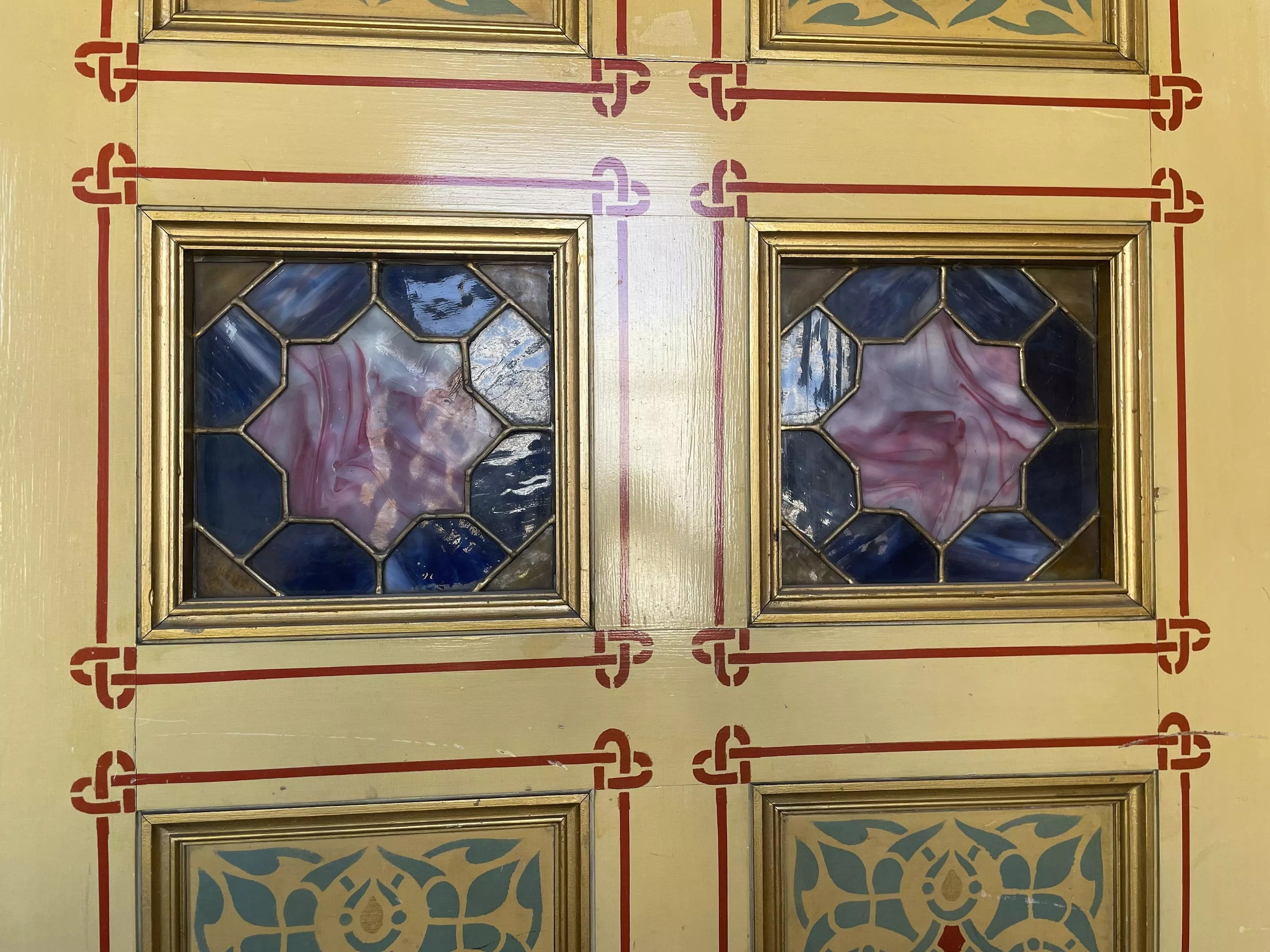
Non Plus Ultra cleaned up each element of the El Jebel, like these stained glass and painted doors in the ballroom.
Catie Cheshire
That operation shuttered in 2012, however, and no one had legally entered the building until 2023, when NPU agreed to clean it up in October.
“We’re really honored to have the privilege to be able to bring some of these incredibly historic and unique buildings back into the public eye,” Langer says.
NPU has also rehabilitated the Sports Castle and the Brighton and Arch buildings in the River North area. The company purposefully keeps renovations simple to honor history and allow room for most types of events.
“It’s just navigating our way through it and understanding what’s allowed that’s not going to interfere with the historic significance and designation of the building,” Langer says. “But it will also allow us to get the occupancy and the life safety and the priors that we need.”
Bathrooms and safety are NPU’s top concerns, as city requirements for fire safety weren’t as stringent in the early 1900s. The company also meticulously cleaned the space to showcase details effectively. One of the top projects at El Jebel was the floors, which were gray in appearance and covered in grime when NPU got inside.
Now, they’re a shiny medium-wood tone.
“These floors were in very rough shape, and we did a very basic refinish on them,” says Lindsay Probasco, head of sales for NPU in Colorado. “I was stunned at how gorgeous they are. It looks way better. … You can tell in a lot of rooms there was carpeting down, which you will never convince me that it was a good idea to cover gorgeous hardwood floors with carpet.”
Probasco recalls a potent sewage smell, born of pipes having been neglected for over a decade, when NPU arrived. The smell is now gone, thankfully, and the pipes are up and running – but it was a process to get there.
“It was a nightmare,” she says. “They were like, ‘Okay, we fixed these twelve leaks and we think we’re good’ and then, ‘Oh, nope, there’s another one,’ so we have come a long way.”
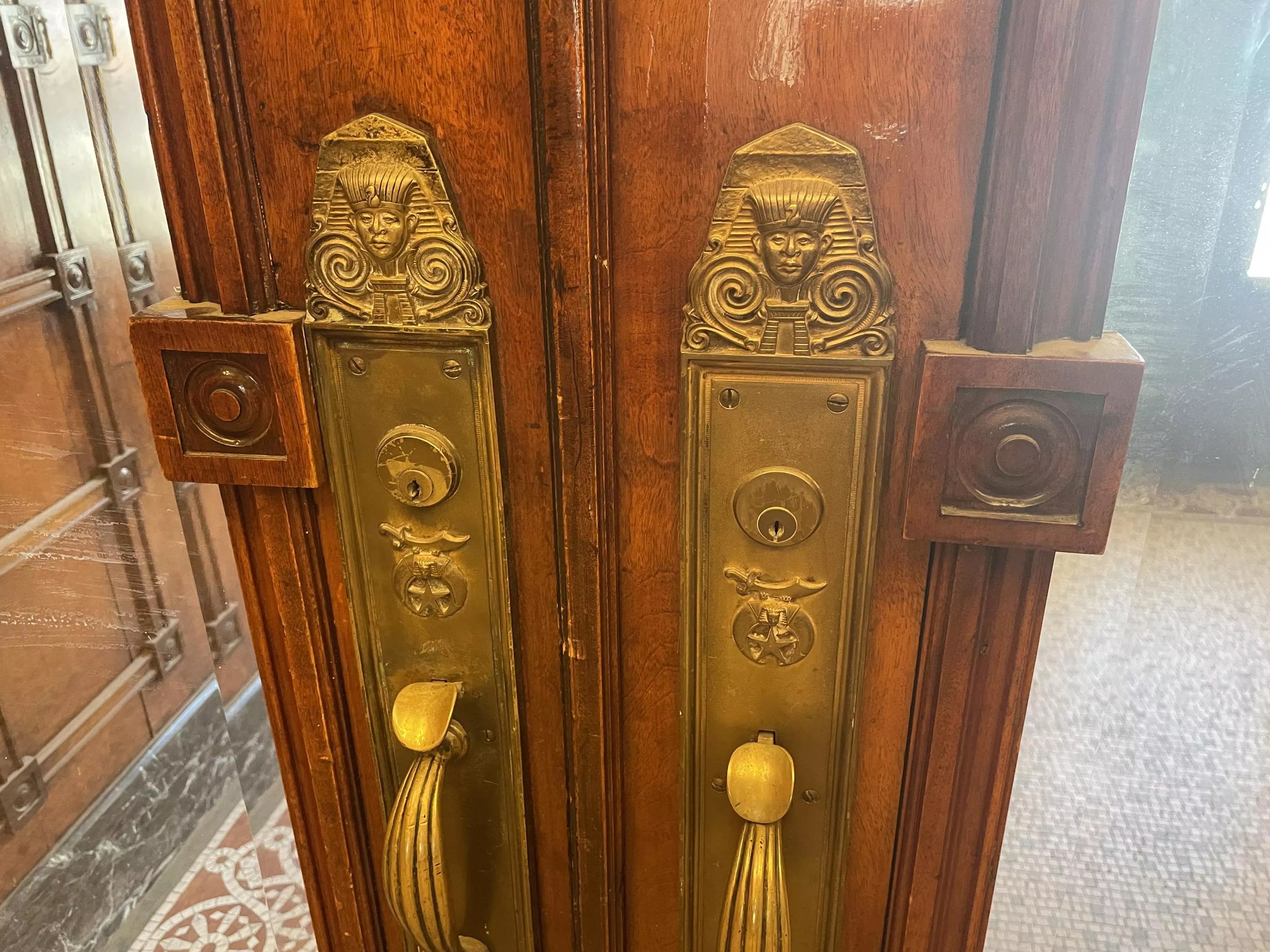
The El Jebel’s handcrafted doorknobs were stolen at one point, but eventually returned.
Catie Cheshire
The space is now a visual marvel, with everything from the floors to the windows to the ceilings exhibiting careful detail and craftsmanship. Probasco says the Shriners, having branched off from the Masons, were able to infuse the space with custom door handles and inscriptions over the doorways on the first floor themselves.
According to senior marketing manager Tim Kitchell, shortly after the space closed in 2012, all of the custom door handles were looted. However, the owners were able to recover them when the person who had stolen them listed them for sale online, agreeing not to press charges if they were returned.
Each floor of the building represents its own architectural style. Kitchell compares El Jebel to the TARDIS from the long-running BBC series Dr. Who because of the way it seems to constantly expand.
“I feel like I’ve been in this building a million times, and I’m still finding things that I didn’t notice before,” Probasco adds.
The exterior is made to look Moorish while the first floor has a Turkish-style reading room and a Flemish-inspired billiard room. Probasco says the first floor can be used as a meeting or reception space, or even a classroom.
Each floor has a reception room and its own coat check. The building will boast the oldest working elevator in Colorado once it gets re-cabled later this month. It also has secret stairwells and quarters designed for servants to use in its early days.
“You can definitely get lost,” Probasco warns.
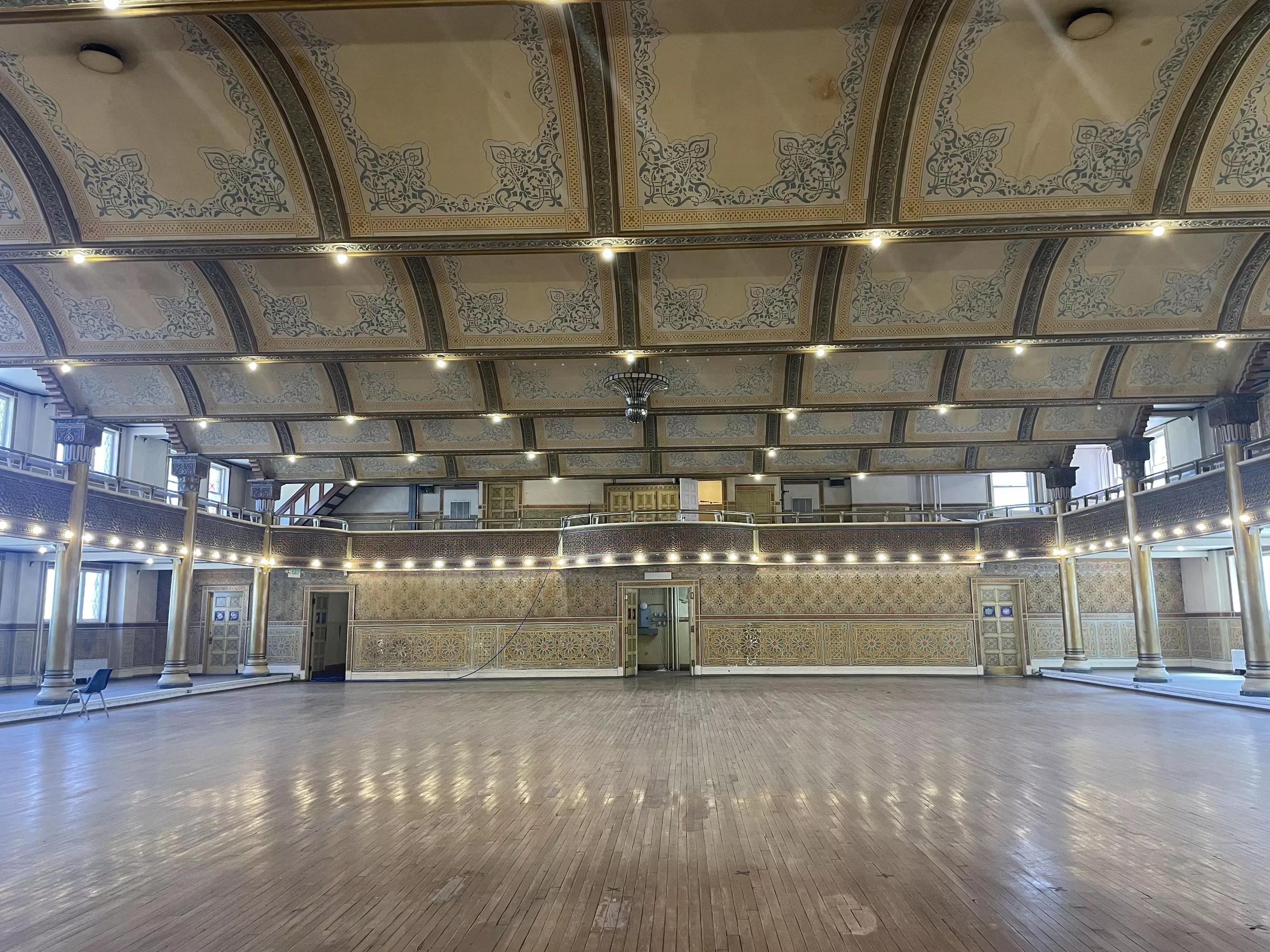
The ballroom is truly stunning.
Catie Cheshire
On the second floor of the building is the ballroom, where the Alhambra-style architecture transports people into a magical world with a scalloped ceiling and balcony that wraps around the entire space, taking up both the second and third floors.
A chandelier in the middle rotates and lights up like an old-fashioned disco ball. Kitchell says he has seen the chandelier work, and it can be used once it’s cleaned up.
NPU is still getting a few new windows for the ballroom; workers are taking their time to be sure it matches the historic architectural style. Almost all of the windows still open, a rarity for older buildings. Even the original radiators still work.
“It’s funny, because some people are like, ‘What are you going to do with this space?’ and I’m like, ‘We make sure we have electrical and plumbing,'” Probasco says. “I wouldn’t even want to change it. I feel like it has so much character.”
Although the ballroom is the most majestic space in the building, it’s not the part that blows people away the most. That honor goes to the theater on the fourth floor.
“Most people are shocked,” Kitchell says of those who enter the Egyptian-style space.
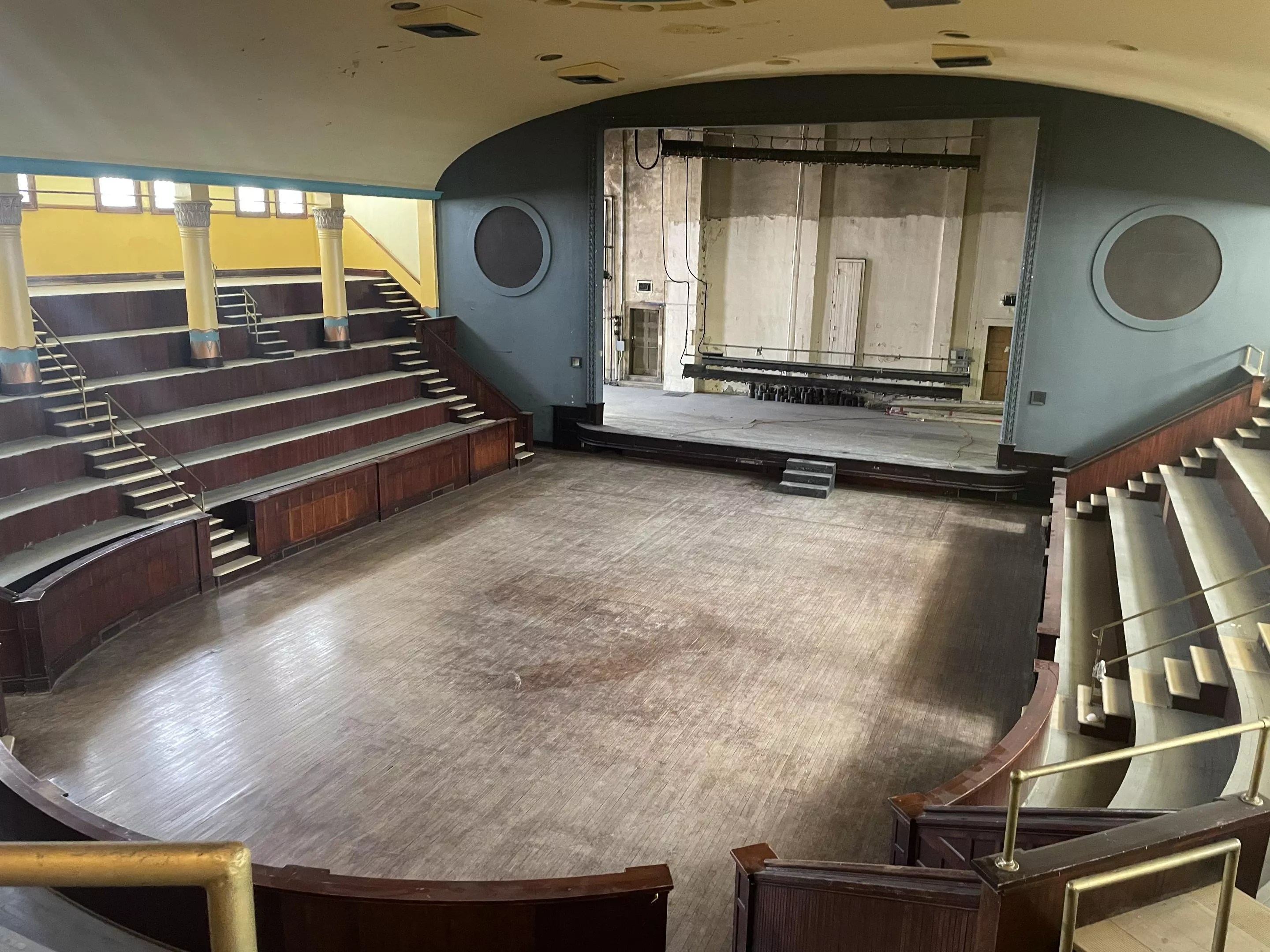
The theater takes up the top two floors of the El Jebel building.
Catie Cheshire
The theater can seat about 300 people and has great acoustics, according to Probasco. The feel is similar to that of the Mission Ballroom, with a floor in the middle of rising bench seating. Plus, there’s an orchestra pit that can open below the stage.
NPU is still working on improving safety in the space; it plans to add a railing to the top of the seating and possibly rope off a few sections where the stairs are uneven or a possible fall hazard.
The old-fashioned switchboard backstage still has power. There’s an organ, as well, though the NPU team hasn’t determined if it would work.

The tiny, tempting doors at the El Jebel.
Catie Cheshire
The old pulley system for lights and curtains is still backstage; surrounding the theater are dressing rooms and utility rooms.
On the fourth floor, on the way to the theater, there’s an unusual hallway with two small doors and one tiny door in the middle. Probasco says every person who tours the space wants to open the doors, so the team is considering putting secret attractions behind them to make the thrill even more real for guests.
The theater takes up the fourth and fifth floors of the El Jebel. Also on the fourth floor is another welcome room and an old-school barber’s area complete with chairs. Probasco says event planners have considered using space for mini-facials or flash tattoos. No matter what, NPU wouldn’t consider getting rid of the unusual space.
“It had so much of a story to itself that it would be awful to do away with it,” Probasco says. Her personal theory is that because the Shriner’s is a gentleman’s club, part of the experience was getting their hair done in-house.
Even the utility spaces in the building are elegant, with the old-school electrical panel and circuit board just as intriguing as the ornate stained glass and patterned ceilings. The electrical panel is wrapped in marble so it wouldn’t be a fire hazard to the mostly wood building.
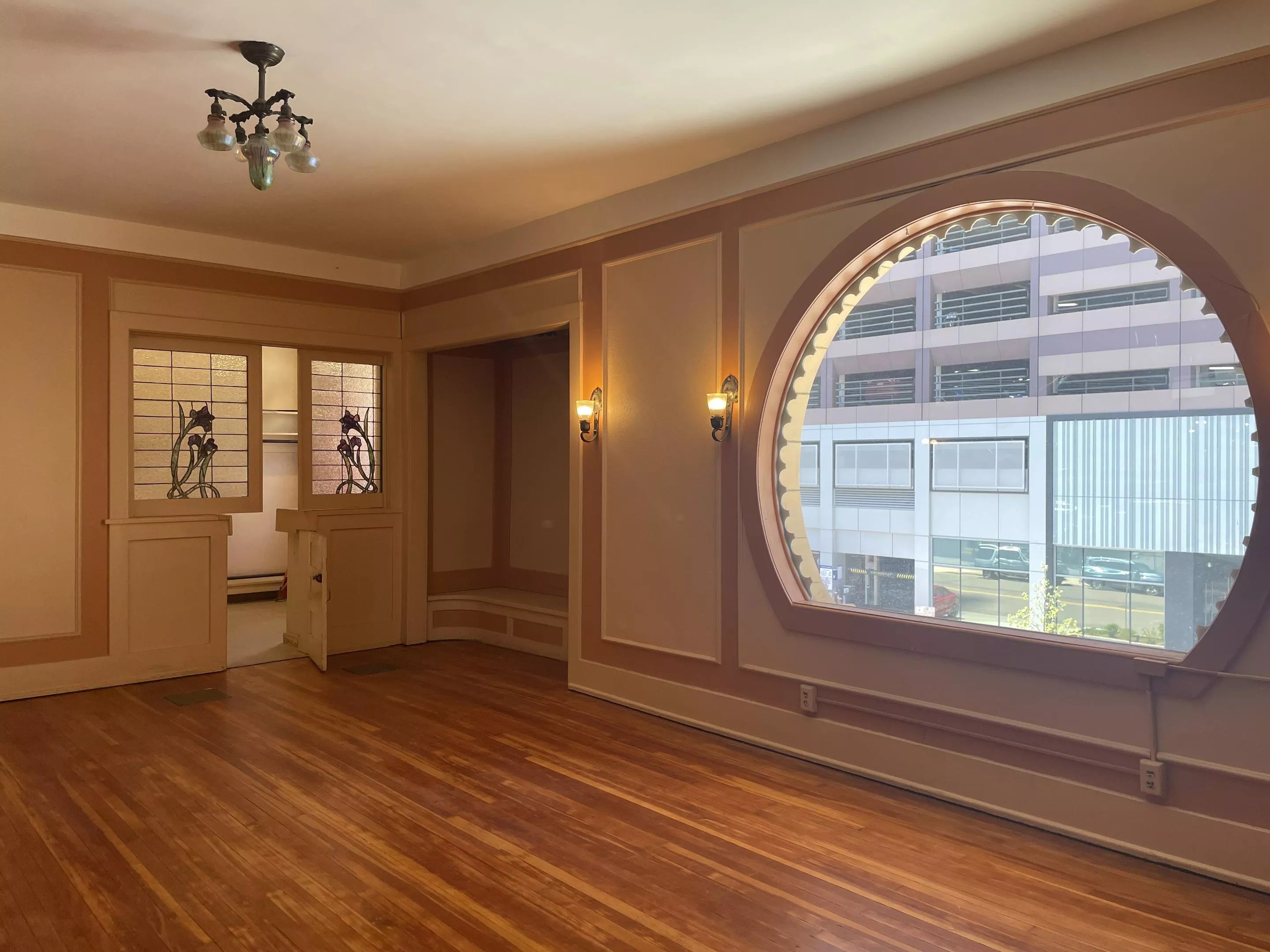
The El Jebel has both picture and key-hole windows.
Catie Cheshire
The NPU team says that intimate concerts, private events and immersive experiences are possible in the space – and it already comes pre-decorated thanks to its architectural style.
The space’s first event was on April 20. El Jebel played host to an annual charity boxing match between the Denver Fire Department and the New York Fire Department, placing a boxing ring in the center of the ballroom.
Langer encourages everyone to get to an event in the space if they can.
“The pictures are cool, the copy is cool, but it will never do justice to walking into this space and seeing the beauty and the intricacy and the detail of this incredible building,” he says.
Find more photos of the El Jebel below:
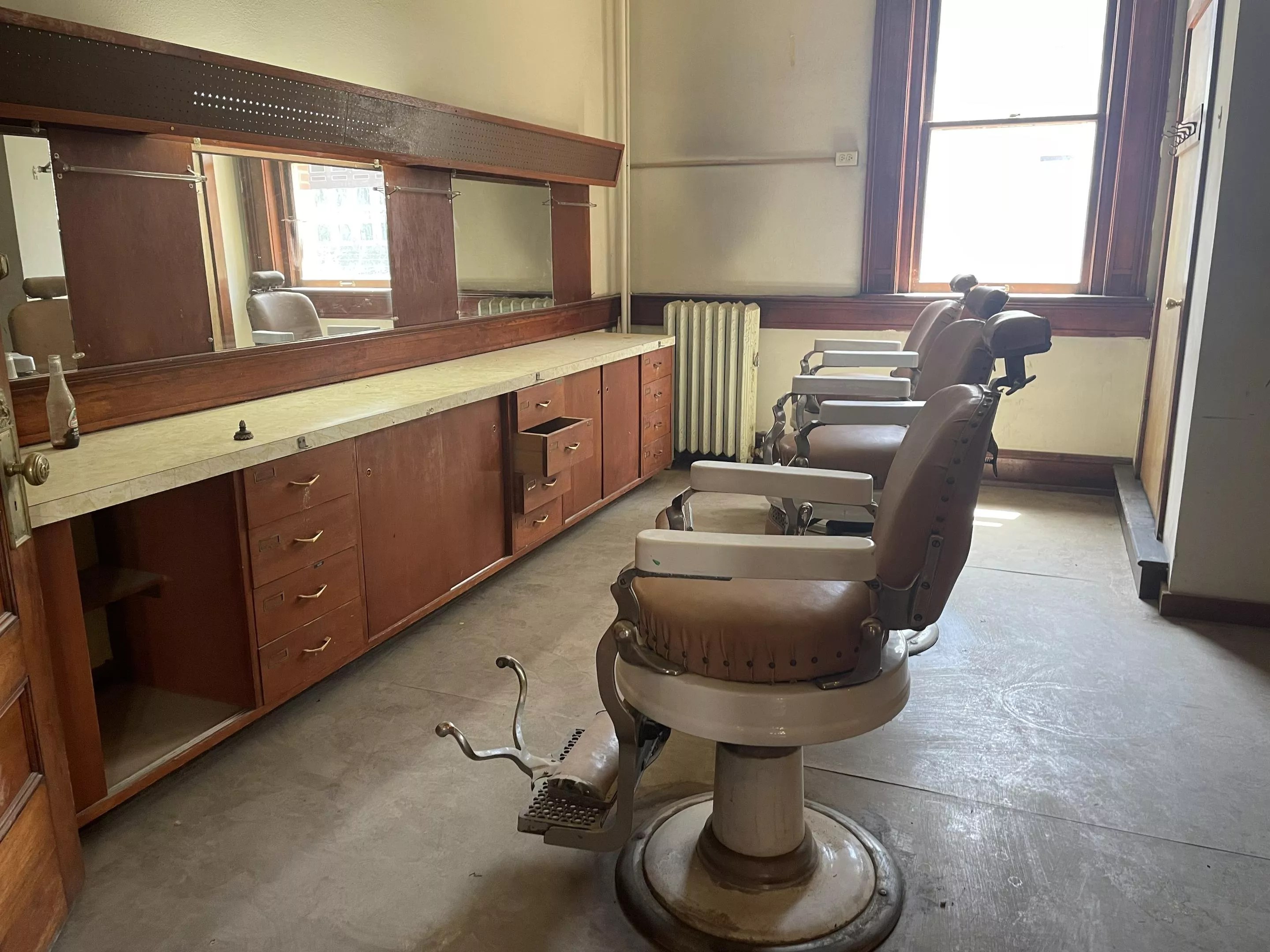
The barber’s setup on the fourth floor could be used for unusual offerings at events.
Catie Cheshire
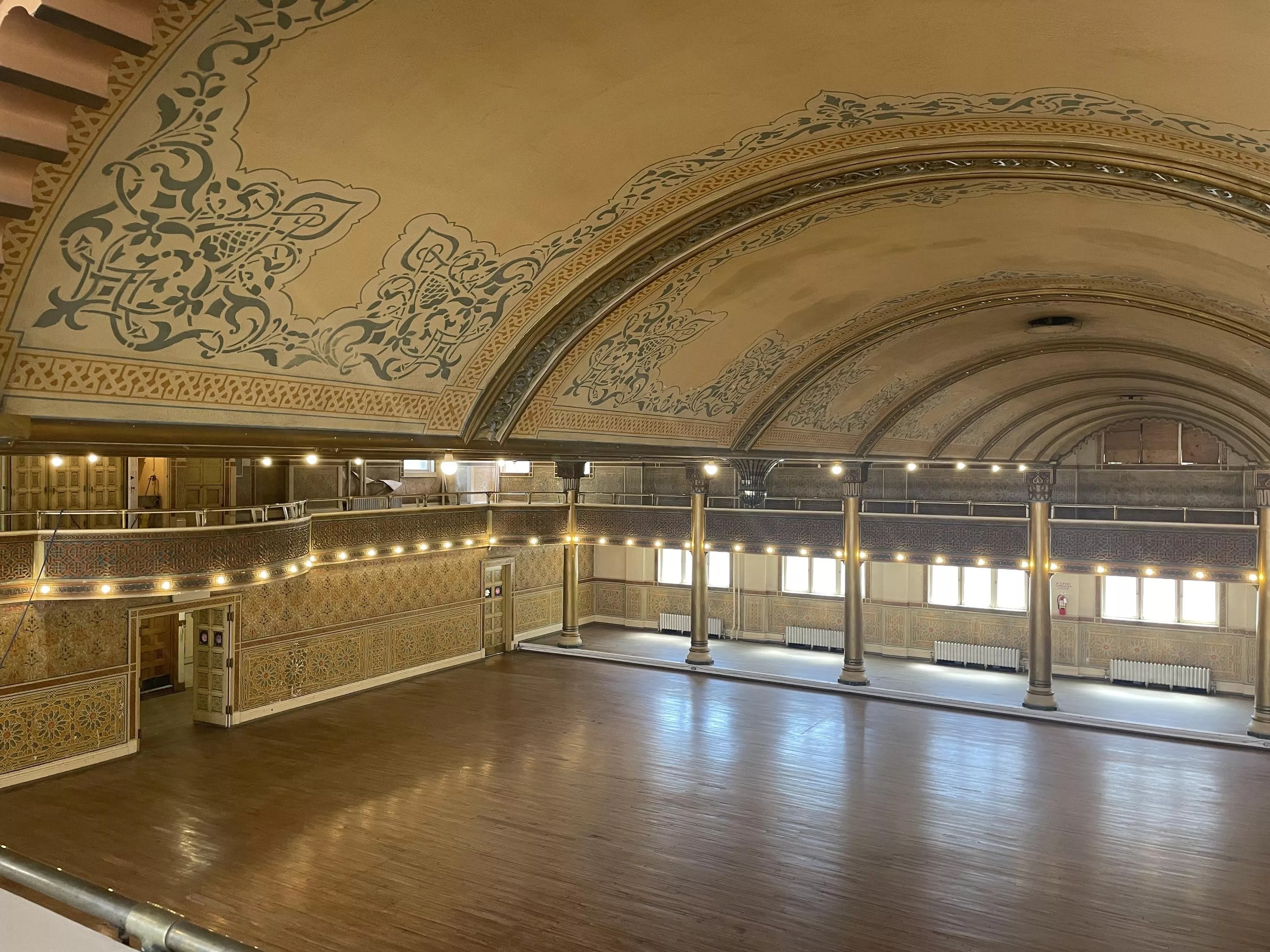
The view from the balcony surrounding the ballroom showcases the details on the ceiling.
Catie Cheshire
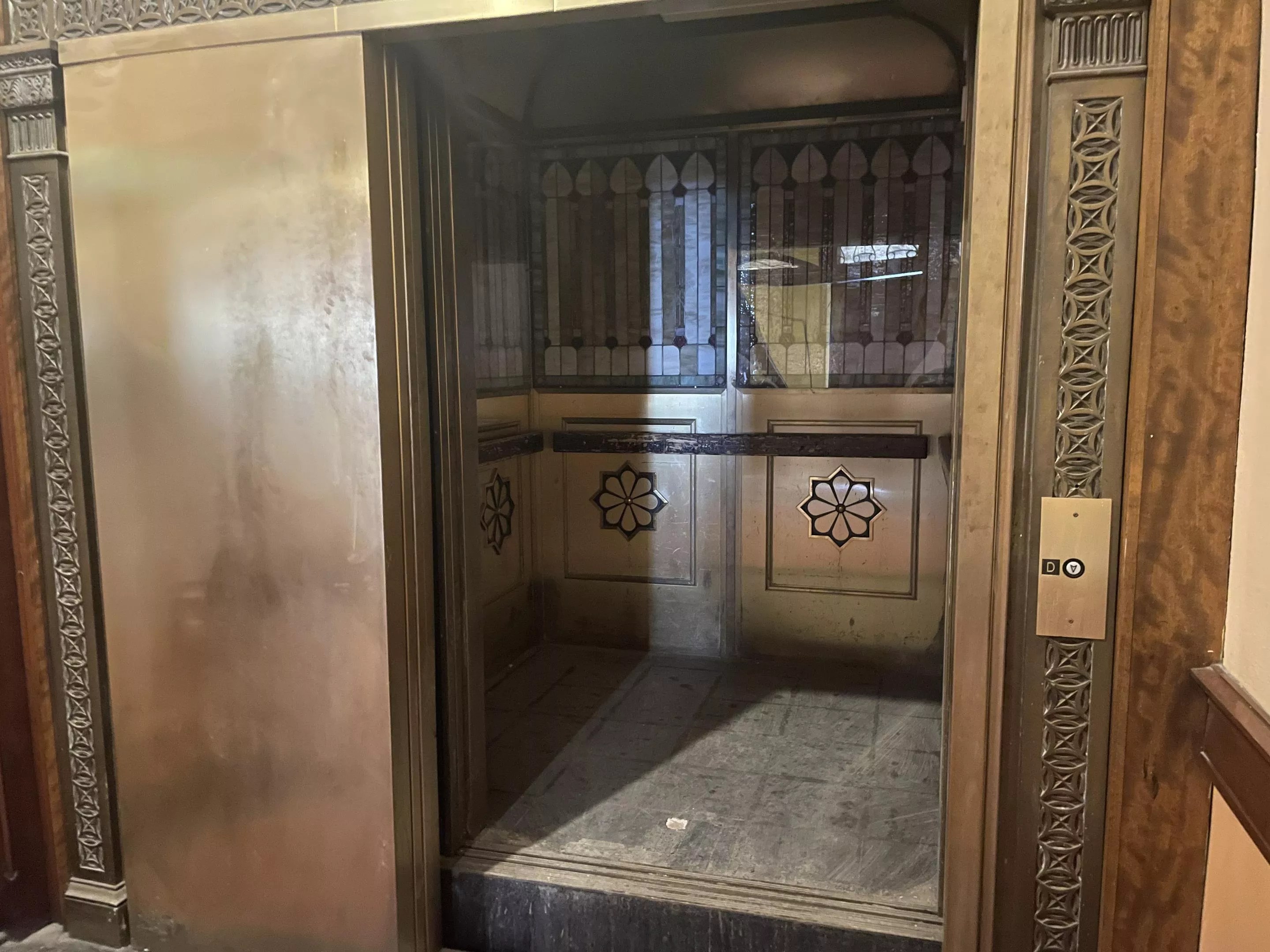
Inside the El Jebel elevator, soon to be the oldest working one in the state.
Catie Cheshire
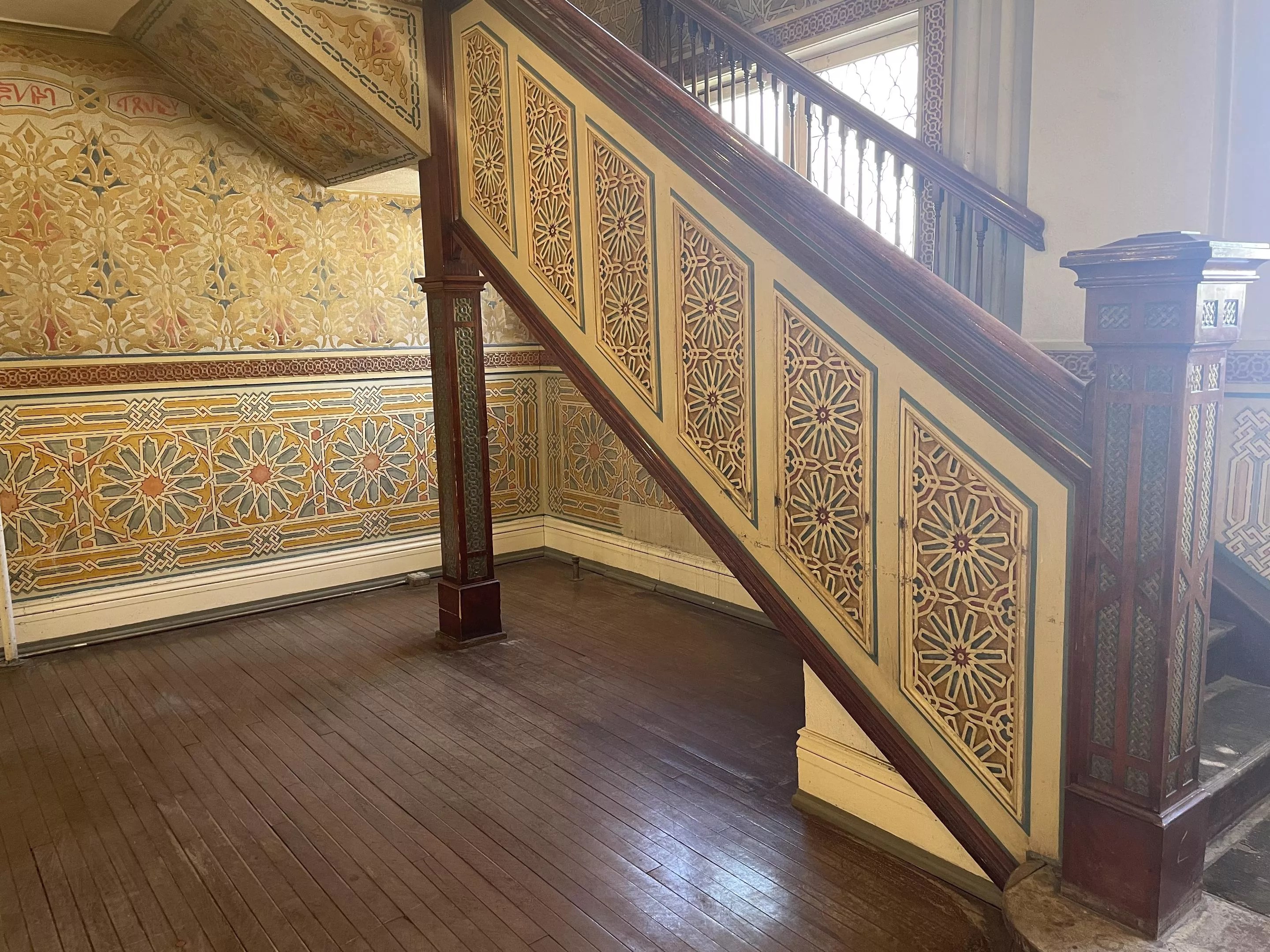
Even staircases in the El Jebel are constructed with artistic detail.
Catie Cheshire
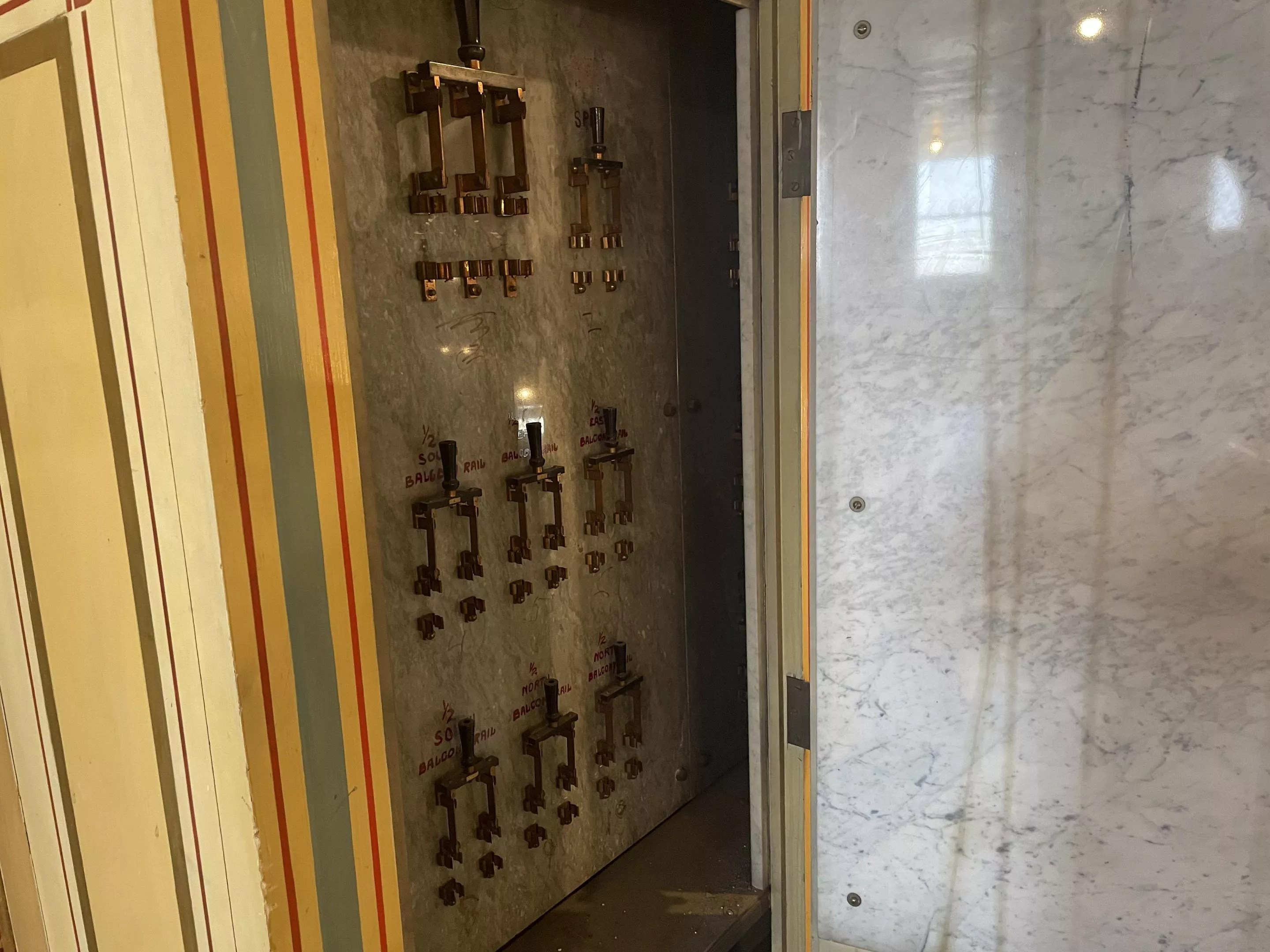
The old-school electrical panel in the building still works.
Catie Cheshire